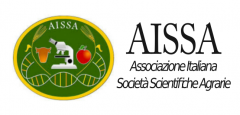VARIABILITY IN PRODUCTION OF GIBBERELLIC ACID AND FUSARIC ACID BY FUSARIUM MONILIFORME AND THEIR RELATIONSHIP
A. Puyam, P.P.S. Pannu, J. Kaur, S. Sethi
doi: 10.4454/jpp.v99i1.3811
Abstract:
Foot rot (Bakanae) disease of rice caused by Fusarium moniliforme (syn. F. verticillioides) has been
causing substantial loss in the production of high value basmati rice. The pathogen produces two
virulence factors viz. gibberellic acid (GA) and fusaric acid (FA) which caused elongation and
stunting, respectively, in rice plants. So, the present study was planned to quantify GA and FA
production by different isolates of F. moniliforme and to find out their correlations with
pathogenicity for better understanding the disease etiology. A total of 38 isolates of Fusarium
moniliforme were isolated from foot rot infected basmati plants collected from different agro
ecological zones of Punjab. Pathogenicity of the isolates was proved on susceptible basmati cultivar
Pusa 1121 and was found positive for gibberellic acid production. Out of 38 isolates, 30 showed the
qualitative presence of fusaric acid by thin layer chromatography (TLC). Quantitatively, all the isolates showed significant variation for GA and FA production and also for kind of symptoms
produced. Amount of FA produced ranged between 0.8 to 6.4 µg/ml and GA between 3.2-23.4
µg/ml. A correlation of GA and FA production was worked with the number of plants showing
elongation and stunting type of symptoms, respectively. FA production showed positive correlation
with stunting type of symptoms whereas GA production was found to be positively correlated with
elongation type of symptoms.




